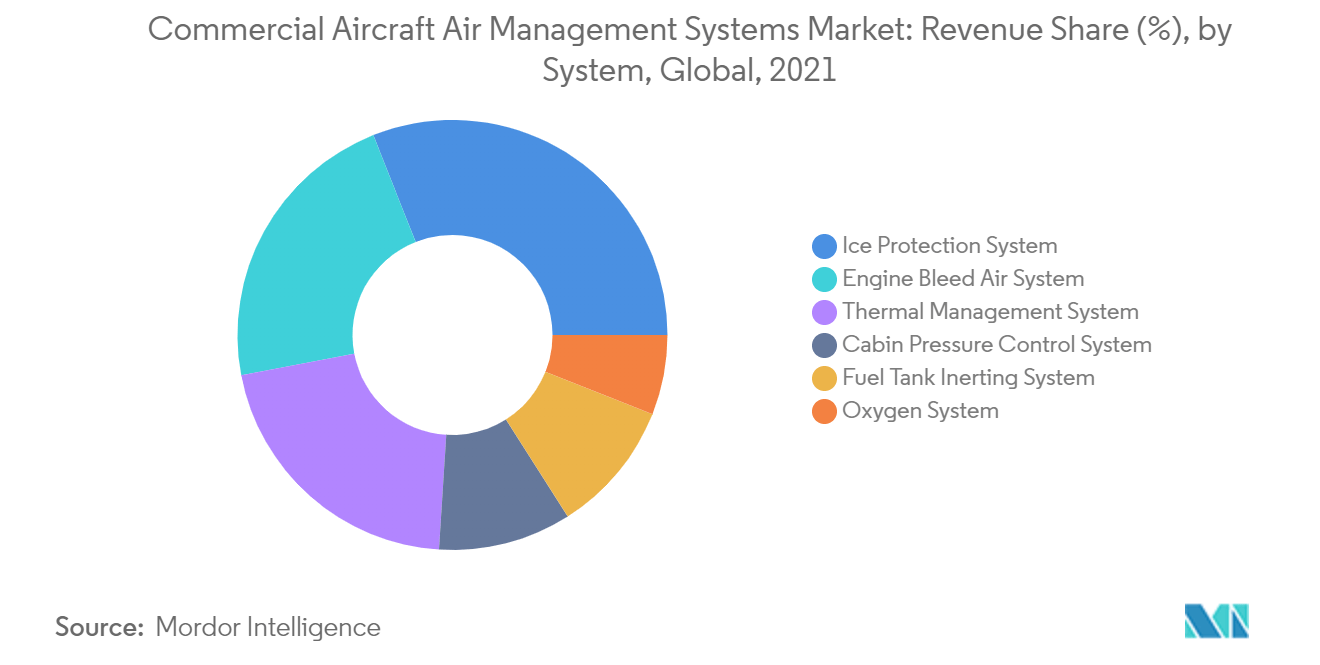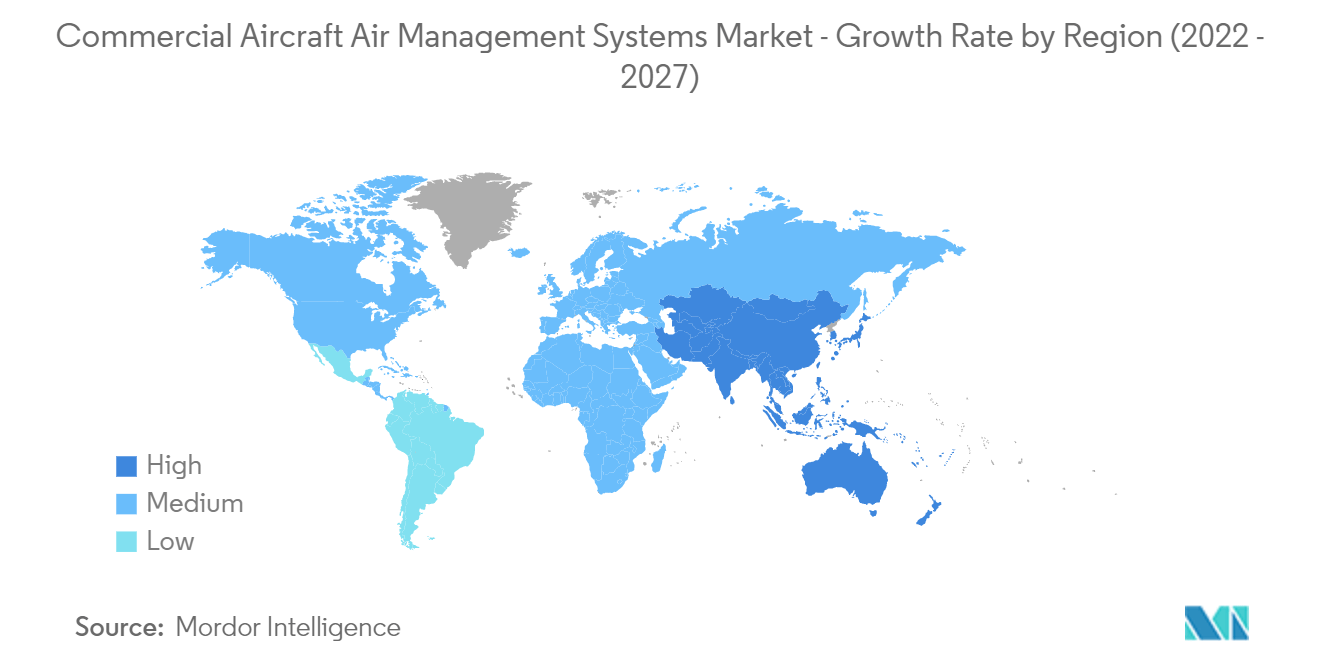Market Trends of Commercial Aircraft Air Management System Industry
This section covers the major market trends shaping the Commercial Aircraft Air Management System Market according to our research experts:
Ice Protection Systems Held the Largest Market Share in 2021
In 2021, the ice protection systems segment held the largest market share in the commercial aircraft air management system market. The architecture of an aircraft makes it vulnerable to the detrimental effects of ice formation on the exposed surfaces of the aircraft, such as control surfaces, wings, engine inlets, fan blades, and other parts of the aircraft that are exposed to extreme cold conditions. In cold weather conditions, the accumulation of ice on the wings can lead to catastrophic effects, like the stalling of aircraft. Thus, the integration of ice protection systems onboard the aircraft facilitates its all-weather operability by preventing ice accumulation on the wings. For instance, in July 2021, Qarbon Aerospace introduced the Helios Ice Protection System, an electro-thermal icing protection system that implants a carbon fiber thermoplastic heating element into the engine nacelles and components, fuselages, flight control surfaces, and wings. The increasing emphasis on aircraft safety has led to increased R&D on ice protection technologies. Researchers from top universities and ice protection systems manufacturers are working to develop an ultra-lightweight heater from the webs of carbon nanotubes for de-icing aircraft surfaces. The technology is still under development and may require significant investment in the coming years. Also, with the increasing aircraft orders, the demand for ice protection systems is expected to increase in the coming years.

Asia-Pacific Region to Grow with the Highest CAGR during the Forecast Period
In terms of geography, the Asia-Pacific Region is envisioned to witness growth with the highest CAGR during the forecast period. China and India are two of the fastest-growing aviation markets in Asia-Pacific and the world. Following the pandemic, the airlines in the region are expanding their fleet of narrow-body aircraft due to the increasing demand for domestic traveling in the region. For instance, as of June 2022, Japan Airlines was in plans to modernize its fleet of Boeing 737 aircraft fleet with an average of more than 12 years with new fuel-efficient models. The airline is currently exploring its option between Boeing 737 MAX and Airbus A320neo family aircraft. The aircraft may order more than 30 aircraft. Similarly, currently IndiGo is replacing its 88 aging Airbus A320ceo aircraft fleet with more fuel-efficient Airbus A320neo and Airbus A321neo aircraft. The replacement of the Airbus A320ceo is expected to be completed by the end of 2023. In addition, the Chinese aerospace manufacturer, COMAC, completed the development of its own narrow-body aircraft, C919, to compete with Airbus and Boeing in the narrow-body aircraft segment. In May 2022, the aircraft's first pre-delivery test flight is expected to be delivered to China Eastern Airlines by the end of 2022. COMAC has received more than 950 provisional orders for the C919, largely from leasing firms or domestic airlines. Thus, the growing demand for air travel with the rapid fleet modernization plans of the airlines is expected to accelerate the growth of the market during the forecast period.


